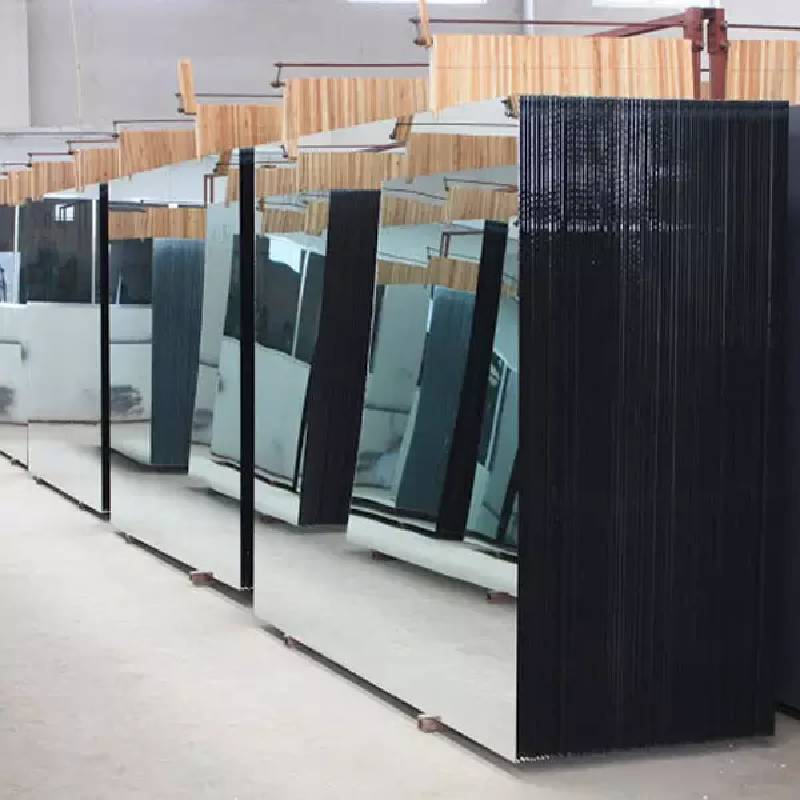The Fascinating World of Low Iron Mirrors
Mirrors have been an integral part of human history, serving not only practical purposes but also aesthetic ones. Among the various types of mirrors available today, low iron mirrors have garnered significant attention for their unique properties and applications. In this article, we will explore what low iron mirrors are, their benefits, and their enchanting roles in design and architecture.
Low iron mirrors are made from glass that has been specifically treated to reduce the iron content, which is responsible for a greenish tint in standard mirrors. The absence of iron allows for a clearer reflection and enhances the overall quality of the glass. These mirrors boast a high light transmission rate, making them a preferred choice for those seeking a crystal-clear reflection without the distortion commonly found in traditional mirrors.
One of the most compelling benefits of low iron mirrors is their versatility in design. They can be seamlessly integrated into various aesthetics, from modern minimalism to classic elegance. The clarity and color accuracy provided by low iron mirrors make them an ideal choice for high-end interior design projects, where visual precision is paramount. In areas like upscale hotels, boutiques, and residences, low iron mirrors not only serve a functional purpose but also elevate the overall ambiance and style of a space.
low iron mirror
Moreover, low iron mirrors are frequently used in architectural applications
. For instance, they are employed in facades of buildings to create striking reflections that engage with the surrounding environment. This reflective quality can enhance the visual dynamics of a structure, drawing attention and admiration. Architects often select these mirrors for their ability to provide a sense of openness and light, making spaces appear larger and more inviting.
In addition to their aesthetic advantages, low iron mirrors also provide practical benefits in interior design. The enhanced brightness they offer allows for better illumination, especially in low-light environments. This characteristic makes them ideal for use in bathrooms, dressing rooms, and other areas where natural light may be limited. By reflecting light more effectively, these mirrors contribute to a more cheerful and vibrant atmosphere.
Environmentally, low iron mirrors present an appealing option as they can be produced from recyclable materials, further enhancing their sustainability profile. As more consumers become environmentally conscious, the demand for eco-friendly products, including low iron mirrors, continues to rise.
In conclusion, low iron mirrors represent a remarkable blend of functionality and beauty. Their clear reflections, aesthetic versatility, and practical advantages make them a popular choice across various sectors. As we navigate the modern landscape of design and architecture, the role of low iron mirrors is likely to expand, inspiring creativity and innovation while enriching the spaces we inhabit. Whether in our homes or public places, these mirrors not only reflect our image but also enhance the world around us, making them a timeless element in the art of reflection.
 Afrikaans
Afrikaans  Albanian
Albanian  Amharic
Amharic  Arabic
Arabic  Armenian
Armenian  Azerbaijani
Azerbaijani  Basque
Basque  Belarusian
Belarusian  Bengali
Bengali  Bosnian
Bosnian  Bulgarian
Bulgarian  Catalan
Catalan  Cebuano
Cebuano  Corsican
Corsican  Croatian
Croatian  Czech
Czech  Danish
Danish  Dutch
Dutch  English
English  Esperanto
Esperanto  Estonian
Estonian  Finnish
Finnish  French
French  Frisian
Frisian  Galician
Galician  Georgian
Georgian  German
German  Greek
Greek  Gujarati
Gujarati  Haitian Creole
Haitian Creole  hausa
hausa  hawaiian
hawaiian  Hebrew
Hebrew  Hindi
Hindi  Miao
Miao  Hungarian
Hungarian  Icelandic
Icelandic  igbo
igbo  Indonesian
Indonesian  irish
irish  Italian
Italian  Japanese
Japanese  Javanese
Javanese  Kannada
Kannada  kazakh
kazakh  Khmer
Khmer  Rwandese
Rwandese  Korean
Korean  Kurdish
Kurdish  Kyrgyz
Kyrgyz  Lao
Lao  Latin
Latin  Latvian
Latvian  Lithuanian
Lithuanian  Luxembourgish
Luxembourgish  Macedonian
Macedonian  Malgashi
Malgashi  Malay
Malay  Malayalam
Malayalam  Maltese
Maltese  Maori
Maori  Marathi
Marathi  Mongolian
Mongolian  Myanmar
Myanmar  Nepali
Nepali  Norwegian
Norwegian  Norwegian
Norwegian  Occitan
Occitan  Pashto
Pashto  Persian
Persian  Polish
Polish  Portuguese
Portuguese  Punjabi
Punjabi  Romanian
Romanian  Russian
Russian  Samoan
Samoan  Scottish Gaelic
Scottish Gaelic  Serbian
Serbian  Sesotho
Sesotho  Shona
Shona  Sindhi
Sindhi  Sinhala
Sinhala  Slovak
Slovak  Slovenian
Slovenian  Somali
Somali  Spanish
Spanish  Sundanese
Sundanese  Swahili
Swahili  Swedish
Swedish  Tagalog
Tagalog  Tajik
Tajik  Tamil
Tamil  Tatar
Tatar  Telugu
Telugu  Thai
Thai  Turkish
Turkish  Turkmen
Turkmen  Ukrainian
Ukrainian  Urdu
Urdu  Uighur
Uighur  Uzbek
Uzbek  Vietnamese
Vietnamese  Welsh
Welsh  Bantu
Bantu  Yiddish
Yiddish  Yoruba
Yoruba  Zulu
Zulu 

